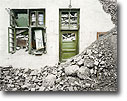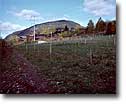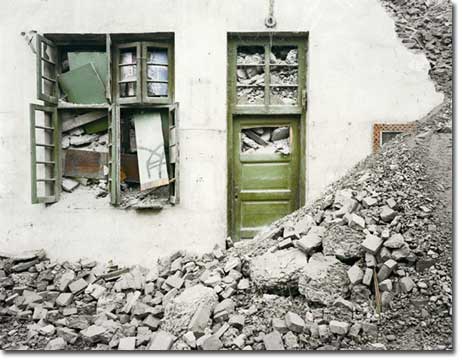Venice Biennale,
Sep 01, 2004 - Dec 01, 2004
Venice, Italy
26th International Biennial of Sí¢o Paulo, 2004
by Virginia Gil Araujo
As if this weren't enough, the conceptual confusion remains despite the elaboration of the three main themes that define the biennial: No Man's Land (Terra de Ninguém); Free Territory (Territorio Livre); and Image Smugglers (Contrabandistas de Imagens). The first theme defends the premise that "in the domain of aesthetics, nothing belongs to no one and everything to everyone". Hug states that, nevertheless, belief in the power of aesthetics is disappearing before the emerging realism. Furthermore, the expression "No man's land" resonates semantically in a dangerous way with post-colonial language. Brazilian historian and art critic Tadeu Chiarelli states, "Can Brazilian events, which made Oswald Andrade's Antropofagia known throughout the world, be mentioned without that connotation?" In the absence of a dialog between its curators, it appears that the biennial is merely a presentation of the participating artists.
The second concept, Território Livre, no less problematic, states that the Sí£o Paulo Biennial "is a protected reserve, in which the flow of goods dries up and political strategies fail." It is difficult to say that it is a "territory free of domination" because the very artists are limited, escorted, prisoners of their era in a world in which its considered utopian to create art and yet everything becomes trite, and within a biennial that has become a national salon similar to those of the 19th century, in that winning an artist's prize merely means being launched into the market.
The last concept, Contrabandistas de Imagens, also can be seen as contradictory to establishing the position of the artist as a smuggler of images between cultures', undoing material borders, or "guarding the borders of a kingdom located beyond society", and even, "art defines the relationships between private property in its own way." This is a completely utopian position that reveals the local discord of the practicians and proponents of documentary art with the most strident tendencies of audiovisual narrative. This point of view forgets that contemporary art often follows metonymy, to the detriment of metaphor and symbol.
Documentary Art
Documentation is present and appears to transcend its merely factual nature to become a work of art. The clearly defined voids in the photographs of Canadian artist Edward Burtynsky, "Three Gorges Dam Project", and of the Polish artist Krzysztof Zielinski, "01.01.2000 from the series 'Hometown' are full of a photographic focus powered by silence. The photographic images define the chaos of a society that doesn't question the predominant model of development. Both artists show their own shock before the landscape. Thus, they remind us of Eugéne Atget's disenchanted views of streets emptied due to the urban reform of Paris in the 1900s. Nevertheless, one must treat the question of documentary art with consideration, as only time will transform photographic records into art.
Assuming historical responsibility for the reality created by journalism by manufacturing the present out of the ruins of the past, Norwegian artists Ingrid Book and Carina Héden, talk about sustainable agriculture in an interview that mixes video and photography with a pile of newspapers entitled "News of the Countryside". They take inspiration from a regional painting from 1903 of a potato harvest in an interior city of Norway, a city that was very possibly ignored by the experienced and refined art audiences. One of the exhibition's highlights, this work stresses the importance of the social insertion of art into a particular community in order to ensure its survival.
|







